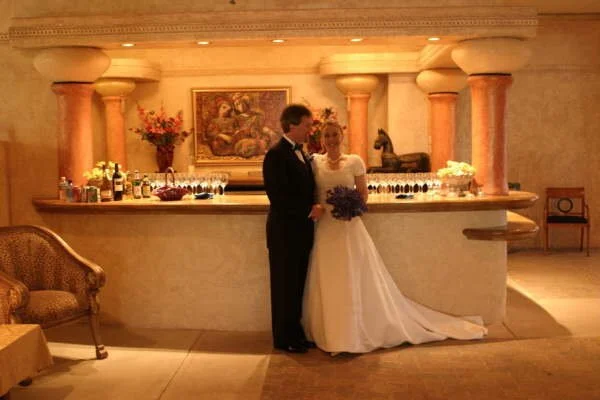How to Stage a Wedding in Your Home: An Interior Designer’s Guide
More and more couples are choosing to celebrate their big day in the comfort and intimacy of a private residence. Whether it’s your own home or a family property, hosting a wedding in a house offers a warm, personal touch that many venues simply can’t match. As an interior designer, I see home weddings as the perfect blend of event design and interior design, where thoughtful planning and staging turn familiar spaces into unforgettable wedding venues.
1. Start with Space Planning
The first step in staging a wedding at home is understanding the flow of the event. Walk through the property and identify natural areas for each part of the celebration:
Ceremony space – often a backyard, garden, or living room with beautiful natural light.
Reception area – a cleared great room, dining room, or outdoor tented space.
Lounge zones – cozy seating nooks that encourage guests to mingle.
An interior designer’s eye helps transform everyday rooms into functional event spaces, ensuring there’s enough room for seating, tables, and movement.
2. Use Your Home’s Best Features
One of the greatest benefits of a house wedding is the ability to showcase architectural details and personal character. Exposed beams, fireplaces, staircases, or French doors can all serve as natural backdrops for the ceremony or photos. Highlight these with wedding décor like floral garlands, draped fabrics, or candlelight to make them stand out.
3. Enhance with Lighting Design
Lighting is a game-changer when staging a wedding at home. String lights, lanterns, and LED uplighting create a romantic atmosphere while also defining spaces. Indoors, consider layering ambient lighting with accent fixtures to elevate the interiors. As with any good interior design, lighting should not only look beautiful but also be practical for photos and video.
4. Create a Cohesive Design Theme
When staging a wedding, it’s important that the décor feels intentional. Draw inspiration from trending wedding color palettes such as soft neutrals with metallic accents, earthy greens with terracotta, or timeless black-and-white contrasts. Carry the theme across table settings, textiles, florals, and even furniture arrangements. This continuity makes your home feel like a curated wedding venue rather than a casual gathering.
5. Furniture and Layout Adjustments
Hosting a wedding in a home often means rethinking how your rooms are furnished. Some pieces may need to be removed or rearranged to accommodate dining tables, a dance floor, or ceremony seating. Renting additional furniture is a smart option—think elegant Chiavari chairs, cocktail tables, or even outdoor lounge furniture. An interior designer can help balance comfort with style, ensuring guests feel at home but also immersed in a luxury wedding experience.
6. Pay Attention to Guest Comfort
From an interior design perspective, staging a wedding is not just about beauty but also about functionality. Make sure restrooms are easily accessible, coat storage is available, and traffic flow is clear. Small details—like cozy throw blankets for an outdoor reception or stylish umbrellas in case of rain—make the celebration feel thoughtful and well-planned.
7. Personal Touches Matter Most
Finally, a home wedding is all about intimacy. Display family photos, heirloom décor pieces, or meaningful artwork to give guests a sense of your story. An interior designer can help integrate these personal details seamlessly into the overall design scheme.
Final Thoughts
Staging a wedding in your home is a beautiful way to celebrate love in a meaningful space. With professional interior design expertise, you can transform everyday rooms into breathtaking wedding venues at home. By planning the flow, highlighting your home’s best features, and curating a cohesive design theme, you’ll create an event that is stylish, comfortable, and unforgettable.
Whether you’re planning a grand backyard wedding or an intimate indoor ceremony, the right staging will ensure your home shines just as brightly as the couple.
